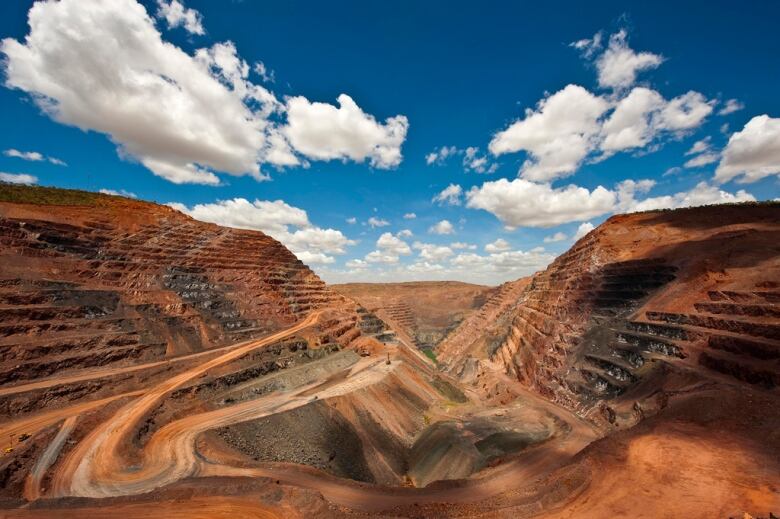Closure of world's largest diamond mine could boost northern mining, analyst says
Closure of Australian mine could push prices up and drive new exploration

For the diamond industry in Canada's North, 2019 wasn't exactly a banner year.
"The diamond market has been suffering," wrote Tom Hoefer, the president of the NWT& Nunavut Chamber of Mines, in an email to CBC.
"Prices have been poor and below what we had wished for."
But on the other side of the Earth, the closure of one of the world's largest diamond mines is offering a glimmer of hope.
Rio Tinto's Argyle Mine in remote Western Australia is set to close at the end of 2020, and has already seen its production of top-quality diamondswind down.
At its peak, the mine produced 90 per cent of the world's coveted pink diamonds and accounted for nearly 50 per cent of global production.
It's closure marks the end for yet another "legacy" diamond mine part of a general trend of slowing production around the world, according to Paul Zimnisky, an independent diamond industry analyst.
You're going to see mines [that] maybe aren't economic now will be economic in years to come.- Paul Zimnisky, Independent diamond industry analyst
Some of those slowing mines are here in the North including Rio Tinto's other property, the N.W.T.'s Diavik mine, scheduled to close in 2025.
ButZimnisky said declining global production could actually encourage diamond exploration by correcting a surge in supply that began in 2019.
"Diamond prices hit an all-time high in the first half of 2011, and that led to additional exploration and development ... including Gahcho Ku in the Northwest Territories," Zimnisky explained.
All that production depressed prices to the point where only "world-class" mines make economic sense, Zimnisky said especially in Canada's North, with its high operating costs.

"The economics are ultimately what determines whether a new mine is brought online," or expansion projects go ahead, said Zimnisky.
And those economics have had a big impact on the northern mining industry.
In 2018, Dominion Diamond Mines suspended work on extending the life of its Ekati diamond mine while the companystudied options to increase its profitability.
And earlier this year, credit ratings agency Moody's downgraded the Dominion Diamonds subsidiary that owns the Ekati and Diavik mines, amid doubt about their future.
"There's very few new projects that are economic at current prices," said Zimnisky.
But Zimnisky says the closure of Argyle Mine, with its significant output, may mean that supply pressure is lessened and less supply could mean higher prices.
"If we see prices go higher, I think you're going to see mines [that] maybe aren't economic now will be economic in years to come," said Zimnisky.
'Supply picture is bullish'
That doesn't mean it's time to throw a party yet.
"The supply picture is bullish for diamond prices," said Zimnisky. "I think the demand is kind of the tricky thing to figure out."
At the same time as supply was surging, marriage rates declined and synthetic diamonds improved in quality factors which Zimnisky said could have contributed to a plateau in demand.

Tom Hoefer with the Chamber of Mines also points out that the Argyle mine was known for its production of coloured diamonds, not the white varieties mined in the North.
"So those niche diamond prices may rise, but [it] may not affect the predominant market of whites," he wrote.
ForHoefer, it's down to governments to attract investment, especially in the N.W.T., which he said has lagged behind other territories for "over 12 years now."
Settled land claims, greater regulatory certainty, and a new Mineral Development Strategy are all things he's looking for in 2020 to indicate a better future for diamond mines.
Rio Tinto, one of the world's largest mining companies, has "done well in Canada," Zimnisky says.
But even so, any new northern mine will have to be "a large enough asset to move the needle," he said.
"Those are few and far between these days."












_(720p).jpg)


 OFFICIAL HD MUSIC VIDEO.jpg)
.jpg)



























































































